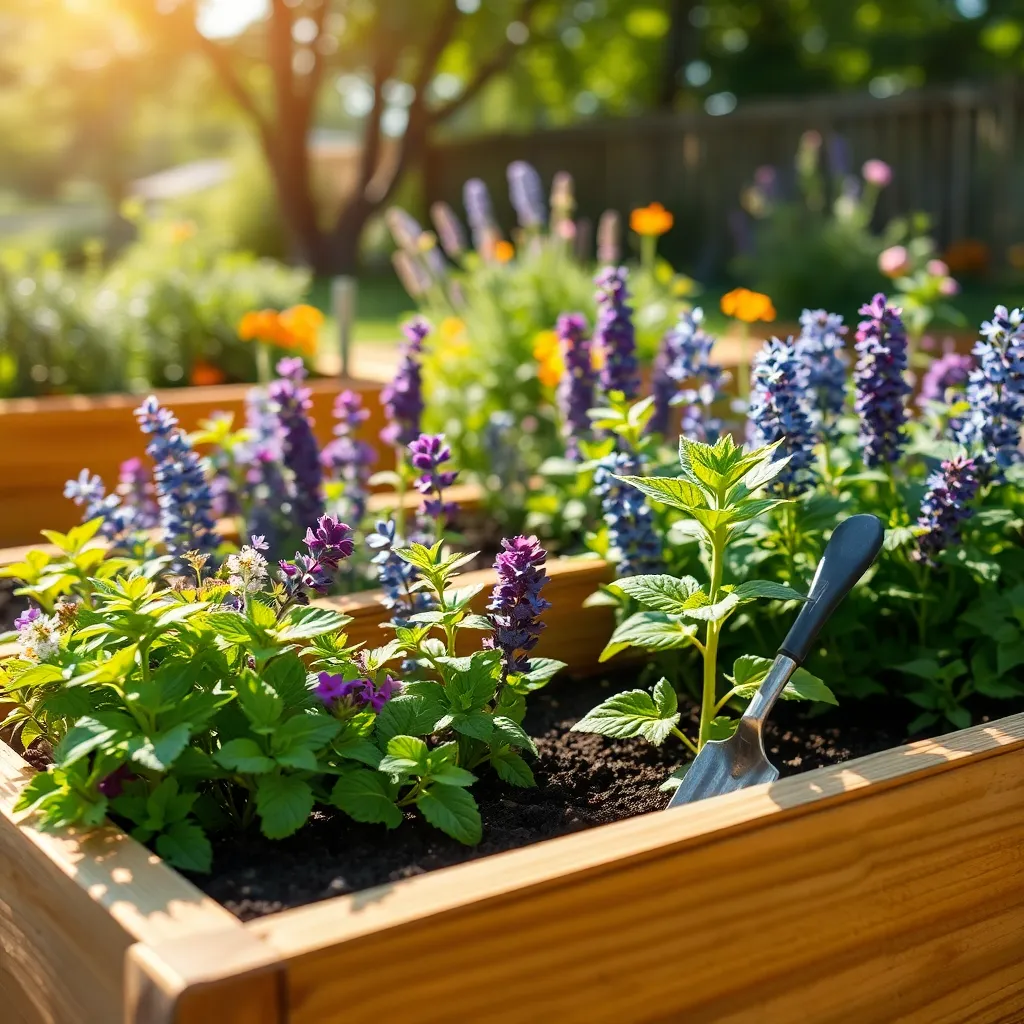Ants are fascinating creatures, tirelessly working and marching in unison, but when they invade your garden, they can become unwelcome guests. Whether you’re a seasoned gardener or just starting out, understanding how to manage these tiny invaders is crucial to maintaining a healthy and flourishing garden. Ants often bring along unwanted pests like aphids, which they farm for their sweet secretions, causing your plants to suffer in the process. By learning how to keep ants at bay, you’ll be taking a significant step toward creating a vibrant, thriving outdoor sanctuary.
In the following sections, you’ll discover a variety of practical strategies to deter ants without harming your plants or the environment. From natural deterrents to simple garden adjustments, there’s something for everyone to try, regardless of your gardening experience. We’ll explore why ants are attracted to certain areas and how you can make your garden less inviting to them. With these actionable tips, you’ll soon find yourself more confident in your ability to manage garden pests effectively.
Our goal is to empower you with the knowledge and tools you need to reclaim your garden from these industrious insects. As you implement these techniques, you’ll not only learn more about your garden’s ecosystem but also cultivate a deeper connection with the natural world. Whether your garden is a small urban plot or a sprawling backyard paradise, keeping ants at bay is a vital part of nurturing a healthy, harmonious space. Let’s dive into the art and science of ant management, so you can enjoy your garden without the worry of unwanted visitors.
Identify Ant Entry Points

Ants can find their way into your garden through a variety of entry points, so it’s important to inspect your garden thoroughly. Look for cracks in garden beds, gaps in fences, or any openings where soil meets hard surfaces.
Another common entry point is where plants touch walls or fences, as ants can easily use these as bridges. Trim back any overgrown branches or vines that make contact with structures to cut off these pathways.
Check around the base of your plants for signs of ant activity, such as disturbed soil or visible trails. These trails often lead back to nest entrances, which can be hidden under rocks or dense foliage.
For a more advanced technique, sprinkle a line of diatomaceous earth along potential entry points to deter ants. This natural product is safe for plants and is an effective barrier when used consistently after rain or watering.
Create Natural Ant Barriers

Creating natural ant barriers can be an effective way to keep these pests at bay without resorting to chemicals. One simple method is to use barriers made from substances ants dislike, such as diatomaceous earth or coffee grounds, which can be sprinkled around the perimeter of your garden.
Another approach involves planting ant-repelling plants, such as mint, tansy, or garlic, which not only deter ants but also add beauty and diversity to your garden. These plants release natural oils and scents that are unpleasant to ants, thus forming a natural barrier.
For those looking to enhance their garden’s defenses, consider using a combination of barriers for increased effectiveness. Layering different methods, such as adding a border of crushed eggshells or cayenne pepper, can prevent ants from crossing into your garden space.
It’s important to maintain these barriers regularly, replenishing substances like diatomaceous earth after rain or heavy watering. Consistent maintenance ensures that your natural ant barriers remain effective throughout the growing season.
Apply Diatomaceous Earth

Using diatomaceous earth is a highly effective way to keep ants out of your garden. This natural powder is made from the fossilized remains of tiny aquatic organisms called diatoms, which can damage ants’ exoskeletons and dehydrate them.
To apply diatomaceous earth, sprinkle a thin layer around the base of plants and along ant trails. It is important to use food-grade diatomaceous earth to ensure safety for both your plants and any beneficial insects in your garden.
Apply the powder when the soil is dry, as moisture reduces its effectiveness. Reapply after rain or heavy watering to maintain a constant barrier against ants.
For best results, focus on areas where ants are most active, such as near nests or entry points into your garden. Experienced gardeners can create a more comprehensive barrier by combining diatomaceous earth with other natural deterrents, like citrus peels or cinnamon.
Use Ant-Repelling Plants

Incorporating ant-repelling plants into your garden can be an effective and natural way to keep these pests at bay. Many plants emit scents or contain compounds that ants find unappealing, making them a great addition to your pest control strategy.
Mint is an excellent choice for repelling ants due to its strong aroma. Plant mint in containers or in a dedicated garden bed as it can spread rapidly, and ensure it receives plenty of sunlight for optimal growth.
Another effective plant is lavender, which not only deters ants but also adds a delightful fragrance to your garden. Lavender thrives in well-draining soil and requires full sun, so choose a bright spot in your garden for best results.
Consider adding marigolds to your garden, as their pungent scent can deter ants and other insects. These vibrant flowers prefer sunny locations and need regular watering, especially during dry spells, to maintain their health and effectiveness.
For a more exotic option, try planting catnip, which is known to repel ants and other pests. Catnip grows best in well-drained soil and full sun, and regular pruning will encourage bushier growth and more potent pest-repelling properties.
Maintain a Clean Garden

Maintaining a clean garden is crucial to keeping ants at bay and ensuring your plants thrive. Regularly removing dead leaves and other debris can help prevent ants from nesting and deter them from invading your garden space.
Start by inspecting your garden for any overripe fruits or vegetables, as these can attract ants and other pests. Make it a habit to harvest produce regularly and dispose of any damaged or fallen fruits to maintain a tidy environment.
Consider the benefits of mulching, which can suppress weeds and reduce ant habitats. Use organic mulches such as shredded bark or straw, but ensure they are not too thick, as over-mulching can create damp conditions favorable for ants.
For a more advanced cleaning approach, regularly turning the soil can disrupt ant colonies and improve soil aeration. Use a garden fork to gently turn the top layer of soil in your garden beds, being careful not to disturb plant roots. This not only helps with pest control but also promotes healthier plant growth by enhancing soil structure.
Conclusion: Growing Success with These Plants
As we wrap up our exploration of maintaining harmony in your garden, let’s recap the five key concepts for cultivating a strong bond with nature—and each other. First, recognize the importance of communication, understanding how ants operate and what draws them in. Second, nurture trust, ensuring you create an environment that naturally deters pests without harsh chemicals. Third, practice patience, as relationships, like gardens, flourish over time. Fourth, embrace teamwork, involving everyone in the household to contribute to garden care. Lastly, celebrate small victories, acknowledging every pest-free day as a testament to your combined efforts.
Now, take the next step by implementing one new strategy today—whether it’s planting mint or setting up a natural barrier. Doing so will not only protect your garden but also enhance your collaborative spirit.
I encourage you to bookmark this article, so these insights remain at your fingertips whenever you need them. Remember, nurturing your garden is much like nurturing a relationship: with thoughtful care and consistent attention, both will thrive. Here’s to a future filled with flourishing gardens and relationships, where every challenge becomes an opportunity for growth.

